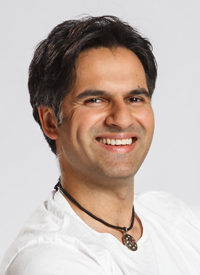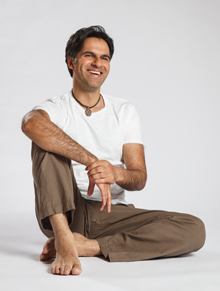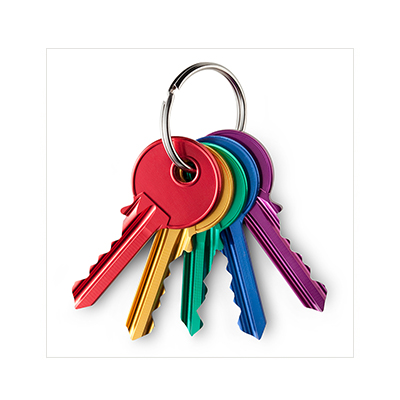Article by Somatic Bodyworker & Holistic Therapist Anwar Ravjani
Holistic therapist Anwar Ravjani has trained in many massage styles and complementary therapies including homeopathy, acupuncture, NLP, counselling and energy healing work such as Reiki. His work is now an integration of all these different threads, working with what the body holds and how it holds it. As he explains here, somatic bodywork is essentially about allowing someone to feel supported and safe, so that the body can let go of patterns of holding which may be the source of pain and discomfort.
 ‘Our bodies tend to mould themselves around our emotional experience so that we develop habits of posture and areas of physical tension and guarding which reflect our perception of reality. In fact, if we can learn to listen, our body relays information to us about how we feel in a constant information loop.
‘Our bodies tend to mould themselves around our emotional experience so that we develop habits of posture and areas of physical tension and guarding which reflect our perception of reality. In fact, if we can learn to listen, our body relays information to us about how we feel in a constant information loop.
Much of the time it’s very subtle but when our feelings are more intense we may experience them as a tightness in our abdomen or a churning in our stomach; our lower back may also feel taut and vulnerable. Such sensations are often linked to stress and overwhelm and are our body’s way of asking us to give our feelings acknowledgment and support.
When we have a healthy awareness of the connection between our body and emotions we’re able to adjust to experiences; we can self soothe and move easily back into balance. However, the price of chronic stress is often a disconnection of our thoughts from our feelings. Because we’re programmed to survive we may not notice stress levels building. If we integrate stress often enough it begins to feel ‘normal’ and we effectively fall out of relationship with our body.
Once stress becomes your default setting you have to consciously re-learn how to regulate it. This requires a return to awareness which is essentially a mindfulness practice. The question needs to be posed directly to your body, not to your mind. In other words you need to ask yourself not ‘how do I think I’m feeling in my body’ but ‘how am I feeling in my body’. One is an actual physical experience and the other is an idea.
As you get used to noticing the language that your body uses to communicate with you, you can listen and respond. This may mean changing what you’re doing so that you can support your emotional needs. For example you may notice that before you go into feelings of overwhelm you habitually hunch your shoulders and shallow breathe. Simply noticing those physical signals will prompt you to take a deep breath and adjust your posture. This allows you to regain space and feel safe, thus bringing down your stress levels.
Sometimes one conscious breath can be enough to bring you back into a true relationship with the present moment as it is, rather than how you habitually perceive it to be. A new perspective can, for example, transform your critical partner into a stressed human being whom you can reason with or your impossible workload becomes something you can delegate.
As you increase your body awareness you are able to distinguish between a holding pattern which is so habitual it feels like the real you, and letting go of holding, which, ironically, can be so unfamiliar that it feels like a threat. The thing about habits is that, whether they are good or bad for us, they make us feel safe.
The work of transformation and change is done by noticing the transition between a familiar learned pattern of reacting and a more relaxed way of being in the body. By physically reprogramming and nurturing a feeling of safety you’ll know when you’ve moved away from that peaceful secure state. You can check in by simply taking a deep breath and noticing your feelings. Once you get into the habit of noticing you can trust your feelings more and make conscious choices rather than being on auto pilot and reacting blindly.’
Body awareness exercise
• Take a good 10 mins every day for a week to make contact with yourself. 
• Touch your body part by part. Start by holding your own hands saying “Í love my hands”, then your forearms, saying “I love my forearms” then your upper arms, shoulders, head, neck and face.
• Make contact with your whole body and just notice what comes up for you.
• What does it feel like? You might notice that connecting to different parts of your body and showing appreciation brings up different emotions. Some parts may not bring up any feelings, there might just be a sense of emptiness, other areas might feel deeply nurturing as if you are being held by a lover.
• Simply do the exercise and notice how you feel without judging it and see what changes. It’s by acknowledging your reality as it is, rather than an idea about how it is, that you can start a real grounded relationship with your body. It’s the sensations you feel that allow you become conscious of who you really are.
My Hoffman Story
 My experience of the Hoffman Process was radical. My journey into therapy and bodywork was initially driven purely by my own need to heal and to understand who I am and why I am like I am. In the beginning I was hooked on an idea of achieving personal transcendence and liberation by discarding my history. I wanted to heal my emotionally wounded self and to be free of it. What I learned on the Process is that only through being able to stand my ground with my past and not run, and not hide could I be present with who I am now.
My experience of the Hoffman Process was radical. My journey into therapy and bodywork was initially driven purely by my own need to heal and to understand who I am and why I am like I am. In the beginning I was hooked on an idea of achieving personal transcendence and liberation by discarding my history. I wanted to heal my emotionally wounded self and to be free of it. What I learned on the Process is that only through being able to stand my ground with my past and not run, and not hide could I be present with who I am now.
Over the course of the week I identified the patterns that I’d learned. I began to see what overwhelmed me and shut down my feelings. The ebbing and flowing between taking a risk and coming back to safety made me test the edges of what I allowed myself. Today I can see that there’s no immediate threat in my life. The key to my freedom was actually looking at my wounds and acknowledging them as wounds rather than a history that I needed to bury or deny. The love I didn’t get, the safety and protection I didn’t feel was the drama that I kept playing out in my life, as Shakespeare said ‘ the world is a stage and all of us merely players‘…I was playing out my wounds again, and again, projecting them on all my relationships.






 Sign up to receive monthly newsletters from Hoffman
Sign up to receive monthly newsletters from Hoffman